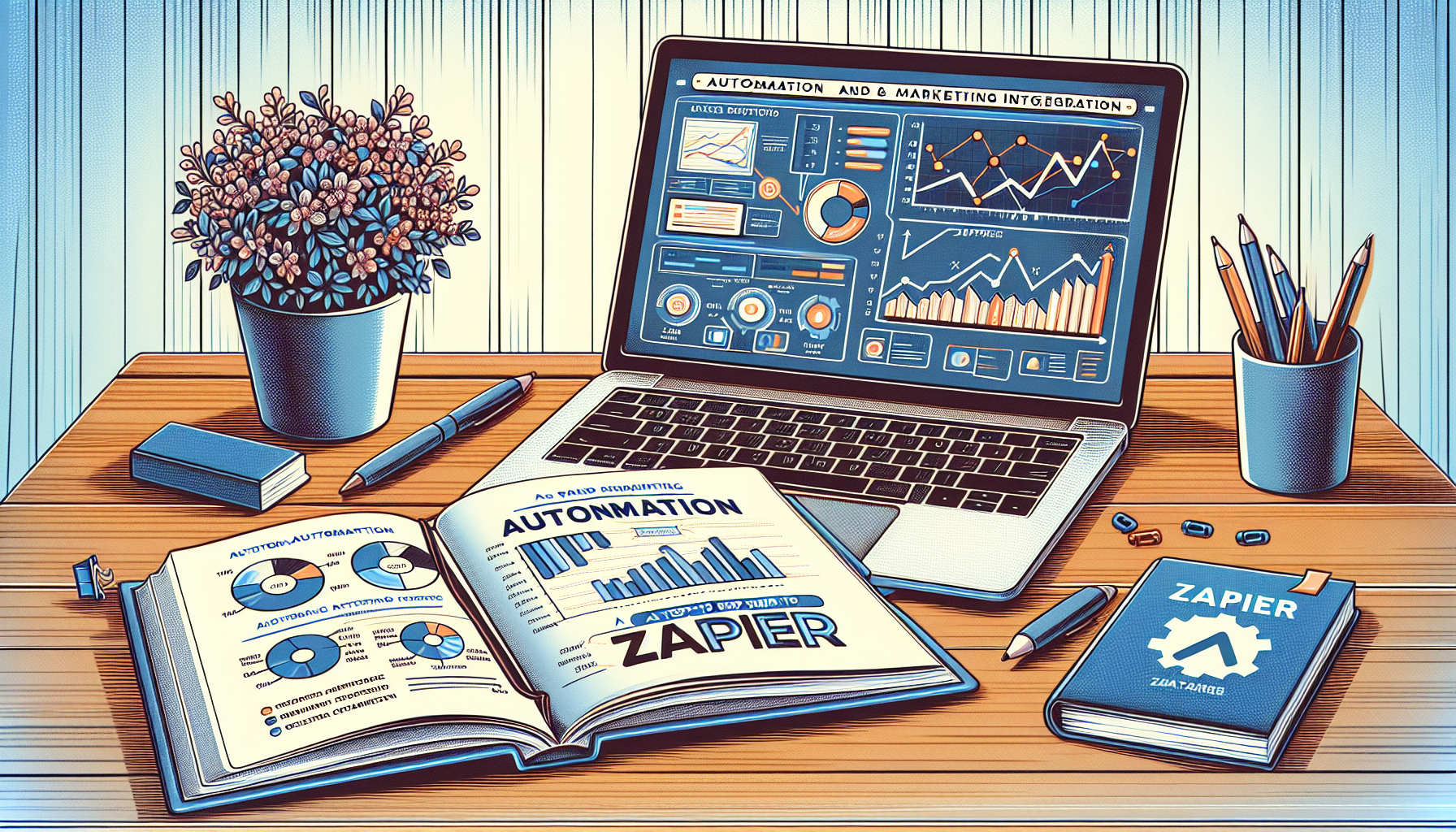Understanding Automation in Marketing
Marketing automation streamlines tasks, saving time and resources while enhancing lead generation and customer engagement. Integrating tools like Zapier and Make can significantly enhance your marketing efficiency by automatically transferring data and performing tasks you might perform manually.
Step 1: Identify Repetitive Tasks
Start by listing tasks that are repetitive and consume a significant portion of your time. Examples include:
- Adding contacts from forms to your email marketing platform.
- Sharing new blog posts on social media.
- Sending follow-up emails to leads.
By identifying these tasks, you can target automation efforts effectively.
Step 2: Define Your Goals
Establish clear goals for your marketing automation journey. Consider focusing on:
- Lead generation enhancement.
- Customer engagement improvements.
- Streamlining communication channels.
- Boosting conversion rates.
Having specific goals will help you measure the success of your automation efforts.
Step 3: Selecting the Right Tools
What is Zapier?
Zapier is a versatile automation tool that connects disparate apps without coding. It allows users to create workflows (called “Zaps”) that automate repetitive tasks between applications.
What is Make?
Formerly known as Integromat, Make is a visual automation platform that focuses on complex workflows. Make offers more in-depth customization, allowing users to create intricate automations with multiple steps and conditions.
Step 4: Building Your First Workflow with Zapier
-
Create a Zapier Account: Sign up for a free account and familiarize yourself with the dashboard.
-
Choose Your Trigger App: Select an app that will initiate the workflow. For instance, if you’re using Google Forms to collect leads, you would choose Google Forms as your trigger app.
-
Select the Trigger Event: Choose when the automation will activate, such as “New Form Response”.
-
Connect Your Accounts: Authorize Zapier to access your app accounts, like Google Forms and your email marketing platform.
-
Set Up Your Action Step: Choose what happens once the trigger occurs. For example, when a new response is recorded, you can add the contact to a Mailchimp list.
-
Test Your Zap: Always run a test to ensure the automation works correctly.
-
Turn Your Zap On: Once tested, enable your Zap to let it run automatically.
Step 5: Leveraging Make for Advanced Automation
-
Create a Make Account: Sign up for an account, and explore the dashboard.
-
Choose a Scenario: Scenarios consist of triggers and actions similar to Zaps but allow for more complex workflows.
-
Select the Trigger Module: Similar to Zapier, pick the app to serve as your trigger.
-
Add Action Modules: In Make, you can add multiple actions and conditions to one scenario. For example, when a new lead is added from a form, you can send them a welcome email and log their details in a Google Sheet.
-
Set Data Paths: If needed, route your data conditionally, ensuring that only certain data points lead to specific actions.
-
Test the Scenario: Run tests to ensure everything works correctly.
-
Activate Your Scenario: Once everything is functioning as needed, switch on the scenario for automation.
Step 6: Monitoring and Adjusting Your Automation
After implementing your automated workflows:
-
Monitor Performance: Regularly check the performance of your Zaps or Scenarios to ensure they are functioning as desired. Pay attention to any errors or notifications.
-
Analytics Tracking: Utilize analytics tools from your email platforms and social media channels to assess the engagement and conversion rates of leads generated from your automations.
-
Iterate and Improve: Based on performance data, tweak your automations for better results. You might discover the need to change specific actions or add new triggers.
Step 7: Troubleshooting Common Issues
-
Connection Issues: If automations fail due to connection errors, re-authorize your app connections within Zapier or Make.
-
Missing Data: Ensure your trigger is accurately set to capture all required fields from forms or other sources.
-
Slow Performance: If Zaps or Scenarios are running slowly, simplify the workflow by reducing unnecessary steps.
Step 8: Expanding Your Automation Horizons
Once comfortable with basic workflows:
-
Explore Advanced Features: Both Zapier and Make offer advanced capabilities such as filters, custom fields, and more.
-
Integrate Additional Apps: Consider adding CRM systems, project management tools, or eCommerce platforms to further automate your marketing processes.
-
Experiment with Multi-Step Workflows: Combine various applications to create multi-step workflows that cover wide-ranging aspects of your marketing strategy.
Best Practices for Effective Marketing Automation
-
Stay Organized: Keep track of each automated workflow and its purpose. A streamlined documentation process can help avoid confusion later.
-
Prioritize Quality Content: Even with automation, ensure the quality of content shared with your audience remains high.
-
Maintain Compliance: Adhere to regulations like GDPR when collecting user data through automated processes.
-
Regularly Update Automations: As your business evolves, be proactive in revising and updating automation workflows to align with new goals and strategies.
Conclusion
By automating marketing efforts through tools like Zapier and Make, marketers can improve efficiency, enhance engagement, and ultimately drive better results. Through step-by-step planning and execution, businesses can transition from manual processes to a seamless automation approach, focusing on strategy rather than routine tasks.


